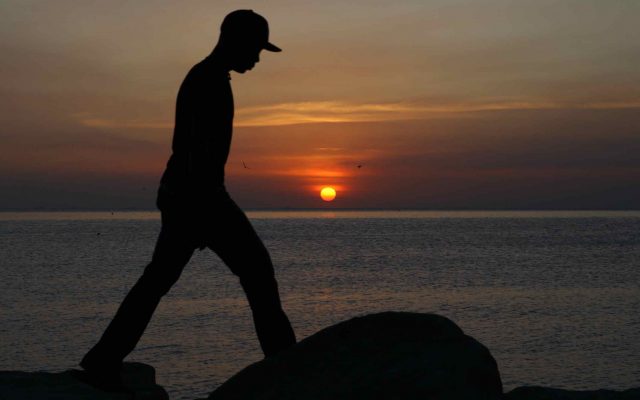MANILA, Philippine — The Philippines observes National Mental Health Week on the second week of October.
This year, some startling statistics were brought to light by Dr. Lourdes Ignacio, a psychiatrist who has helped survivors of the 1990 earthquake, the Mt. Pinatubo eruption, and super typhoon Yolanda: one in three Filipinos are at risk of mental health problems, but there are only 500 psychiatrists who can care for the entire population.
A former president of the World Association for Psychosocial Rehabilitation and professor emeritus of Psychiatry at the University of the Philippines, Ignacio delivered a lecture last week on her work delivering mental health care to municipalities around the country as she received the Geminiano T. De Ocampo Visionary Award for Medical Research from the National Academy of Science and Technology in Luxent Hotel, Quezon City.
The award is named after the late national scientist and father of modern opthalmology in the Philippines, whose patients included two presidents — Ramon Magsaysay and Emilio Aguinaldo.
According to Ignacio, citing the World Health Organization, mental disorders are highly persistent and prevalent worldwide. Aggravating the situation is the growing number of survivors of “extreme life experiences, disasters, violence in the homes and the streets, terrorism, (and) armed conflict,” who suffer the psychosocial consequences of these adversities. Overseas Filipino workers and street children are other vulnerable groups.
In the aftermath of Pinatubo, she encountered a man who had worked 15 years in Saudi Arabia to build a home in the Philippines, only to lose it during the eruption. In a photo she presented, he sat still on what appeared to be the roof of the house. He could not be pried away.
And when she visited communities in Quezon, Camarines Sur, and Western Samar, she saw how the “chronic mentally ill” were locked in their homes, dehumanized, and deprived of proper care.
“The resources to deliver mental healthcare and treatment for the majority of these … continue to be insufficient and inequitably distributed, inadequately utilized … unable to reach patients, hence the majority remain untreated,” Ignacio said.
As chief investigator for the Philippines in the WHO Collaborative Study for Extending Mental Health Care in General Health conducted from 1978 to 1983 in seven developing countries, she found that training and capacity building of health workers who are already embedded in the barangays makes mental health care more accessible to many.
A WHO study showed that 17 percent of adult consultations in health centers involved psychiatric disorders, but only five percent would be recognized by these facilities’ staff.
“The need is really down there at the primary level of care, in the community, but they are not taken care of,” Ignacio said.
While government provides a budget for mental health care, its reach is limited, and most mental hospitals are inaccessible to people living in remote areas. They are also overcrowded. The poor cannot afford to seek help in private hospitals, either.
This is why Ignacio is undertaking “Project Ginhawa” in the municipalities of Marabut, Basey, and Sta. Rita in Western Samar. After Yolanda hit, the local health workers needed to be trained in mental health. From a “biomedical orientation for healthcare,” they shift perspectives to “a truly holistic care,” where the link of body, mind, and environment is made clear.
“There is no health without mental health,” Ignacio stressed.
Through Project Ginhawa, implemented by the World Association for Psychosocial Rehabilitation, Philippines with funding from Christoffer Blinden Mission, health workers “acquire skills to listen, establish rapport, and engage patients in the consultation of health problems,” she said. “They acquire the skill to allow the patient to express feelings and thoughts about symptoms, illness, and discuss treatment, which include consideration of his social situation, including stigma or anything mental.”
Health workers acquire the knowledge and skill in understanding “stress, grief, and crisis in daily life experiences.”
“The message to the health worker is, it’s not just a body that you have to deal with,” Ignacio said.
From July 2014 to July 2017, there had been 282 consultations in Marabut. Of these, 88 patients were found to not have any mental health problem immediately after the disaster, and 73 were found to have mood disorders or depression.
Once the patients have recovered, Project Ginhawa also promotes well-being through livelihood programs, sports programs, and spiritual programs.
Another innovation Ignacio is working on is telepsychiatry, which was piloted in Infanta, Quezon and Naga City, Camarines Sur. Through Skype, consultants from the Philippine General Hospital are able to train health workers in Infanta and Naga City.
“Trained health workers will consult with us, without us looking at their patients, because we’re still in the context of telementoring, supervising these health workers that we have trained, sustaining the relationship with us, and therefore hoping that if 500 psychiatrists cannot reach 110 million Filipinos … we can probably reach them through this,” Ignacio said.










